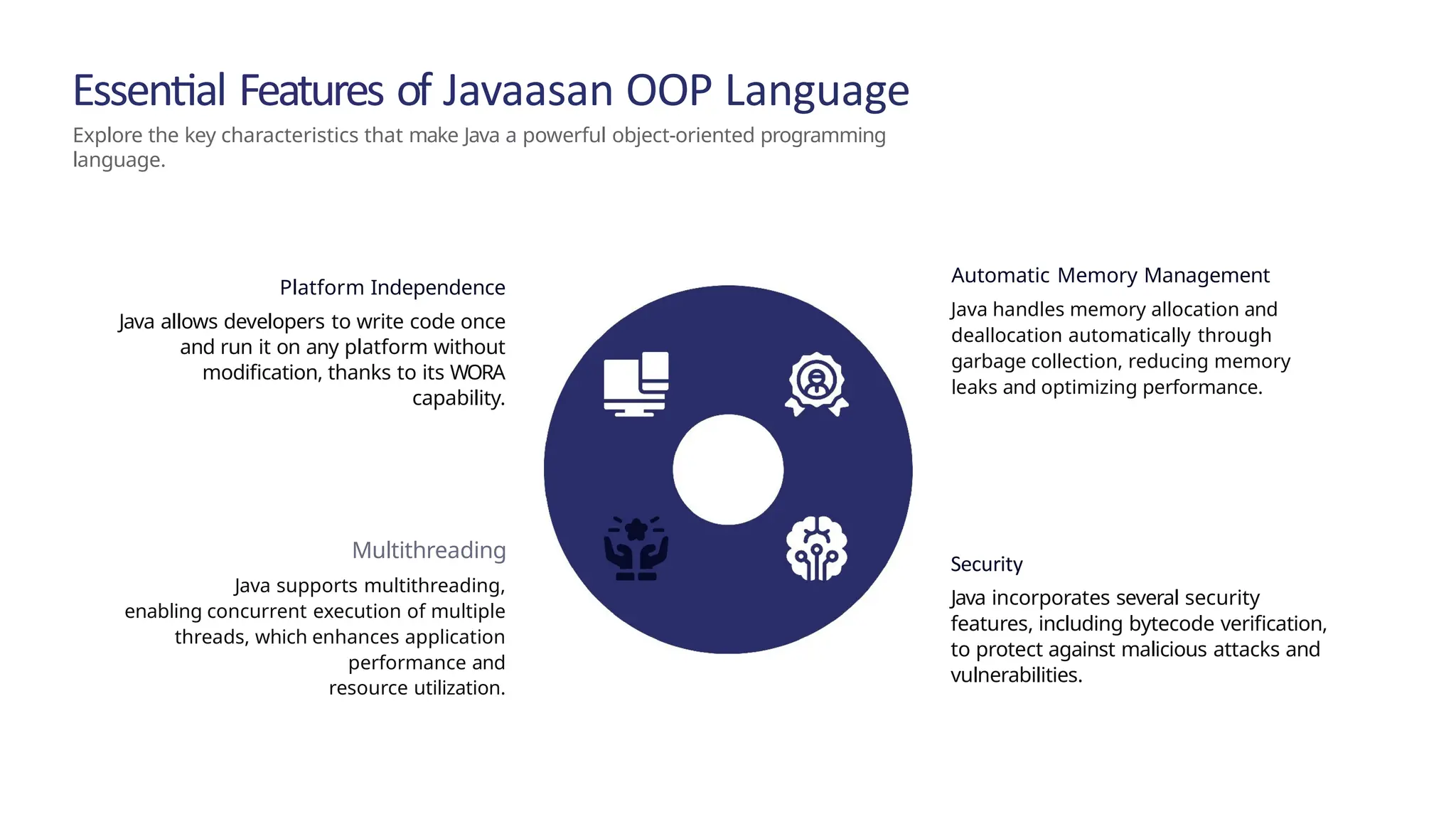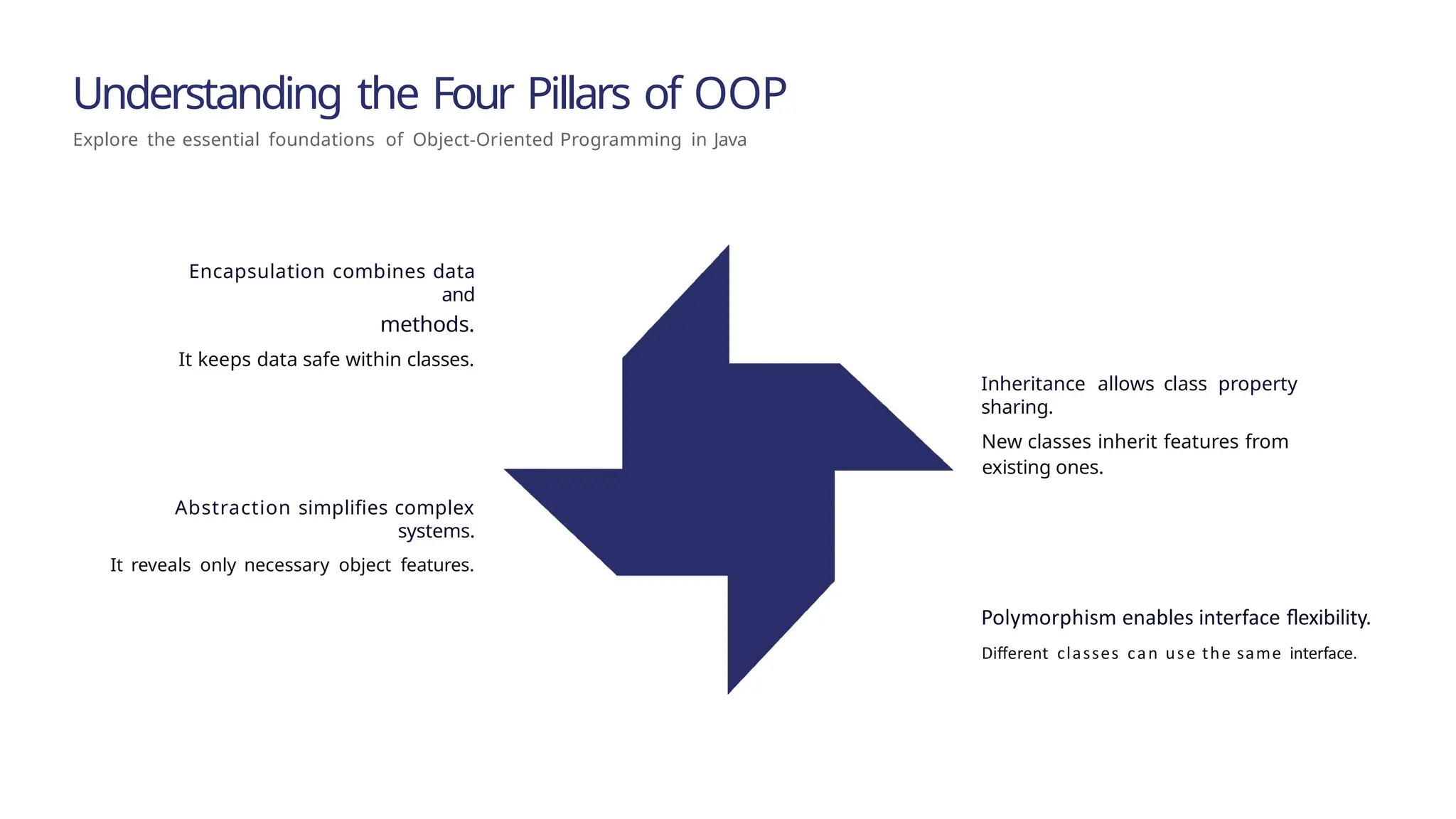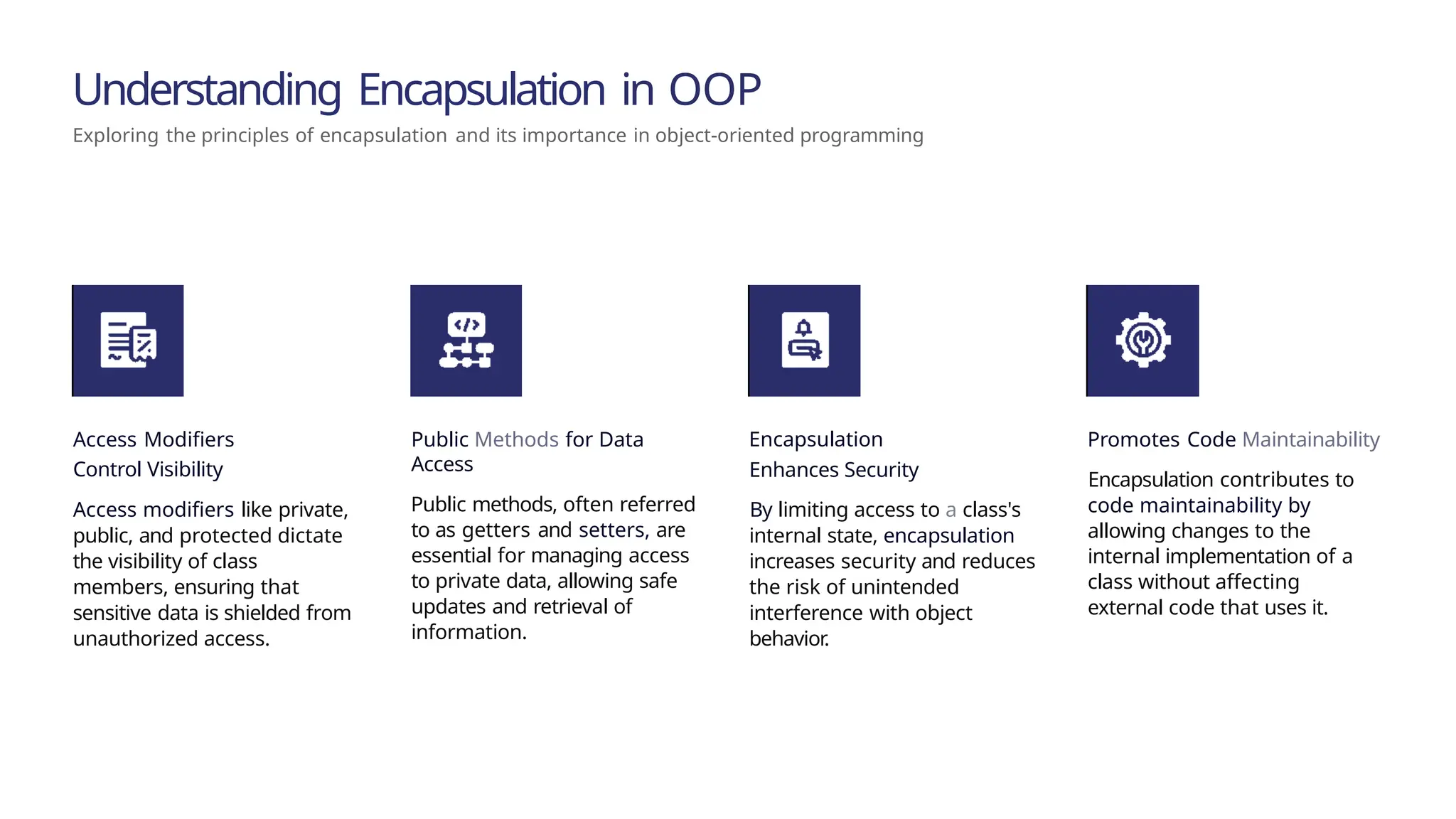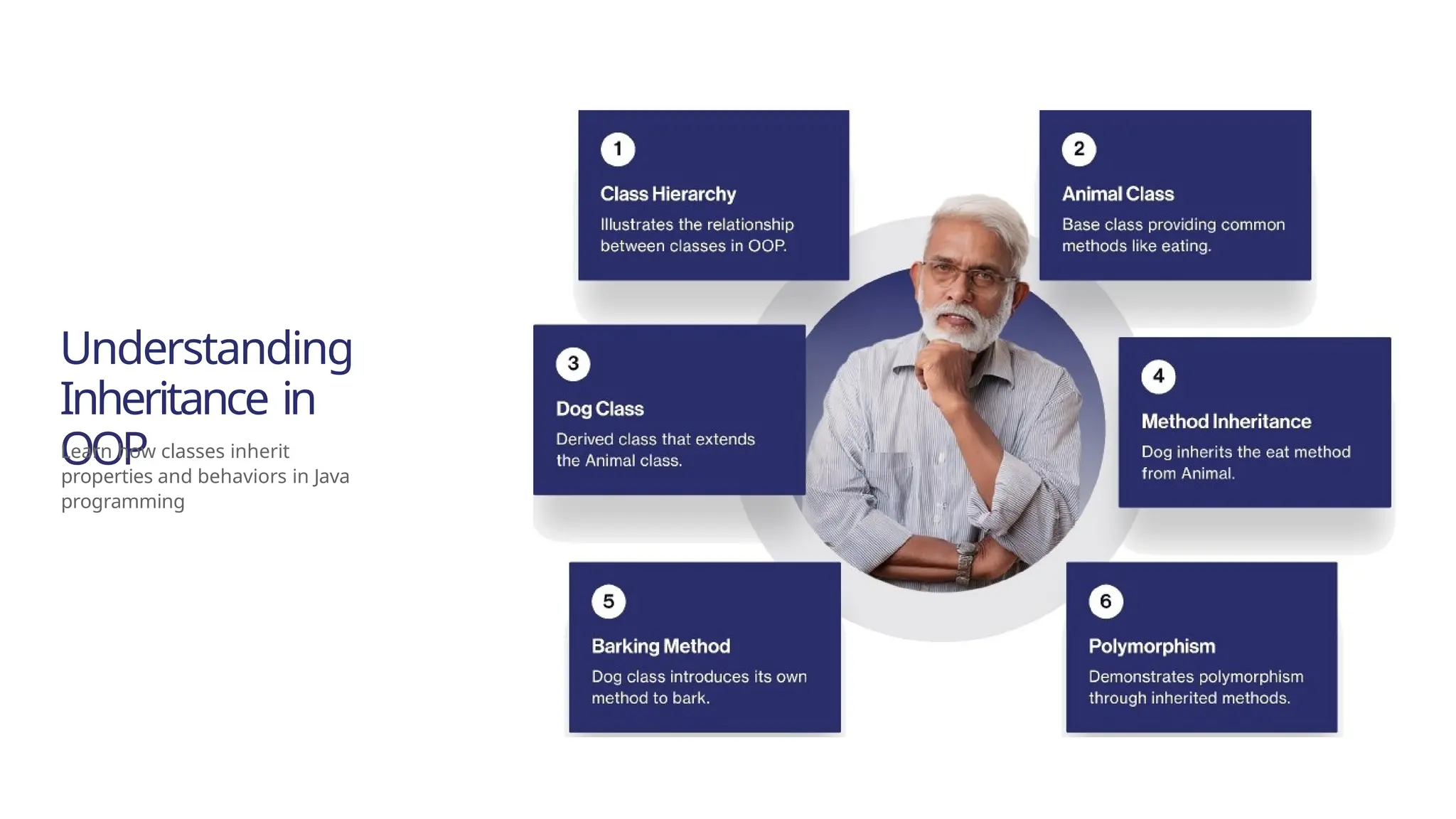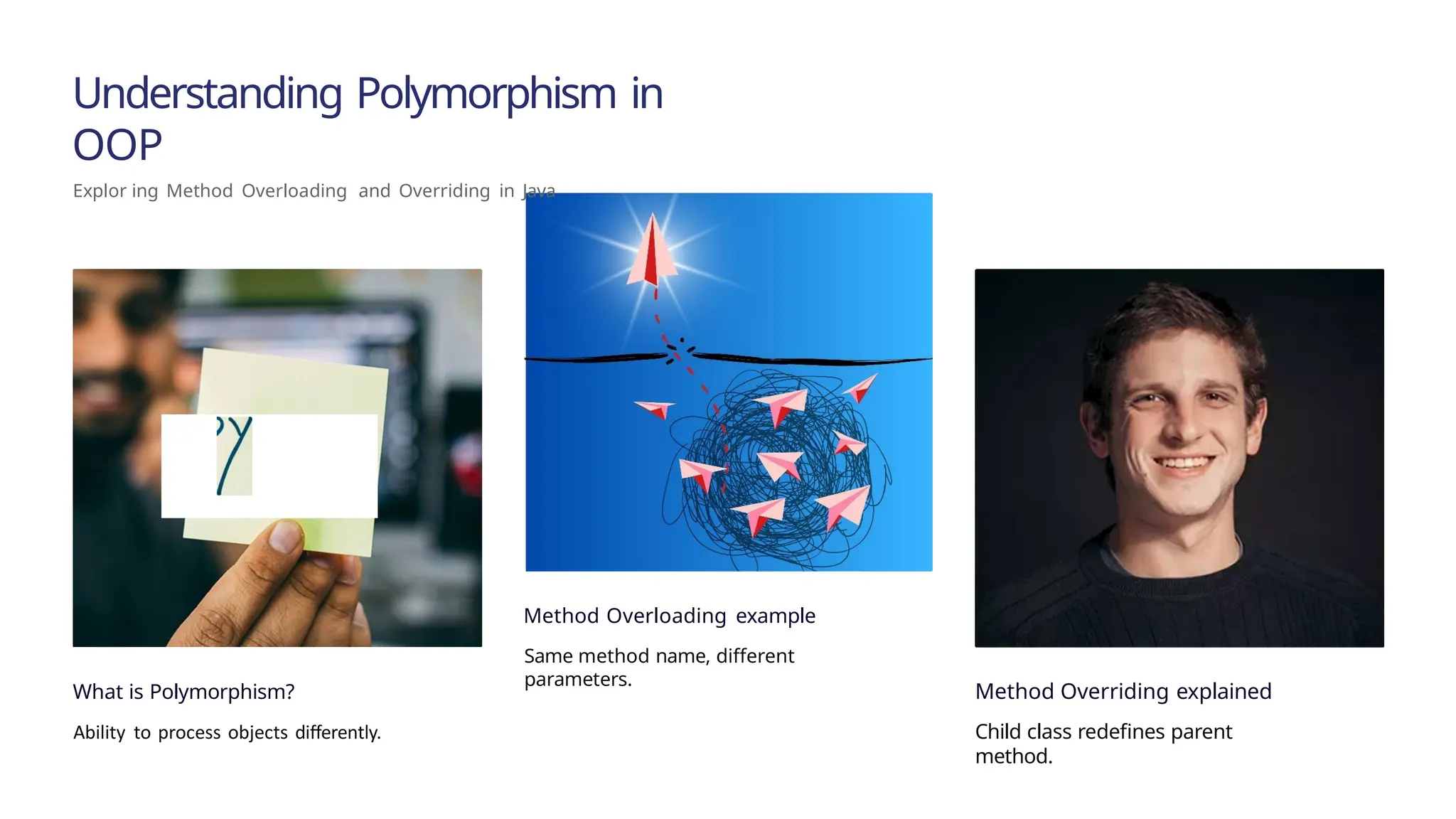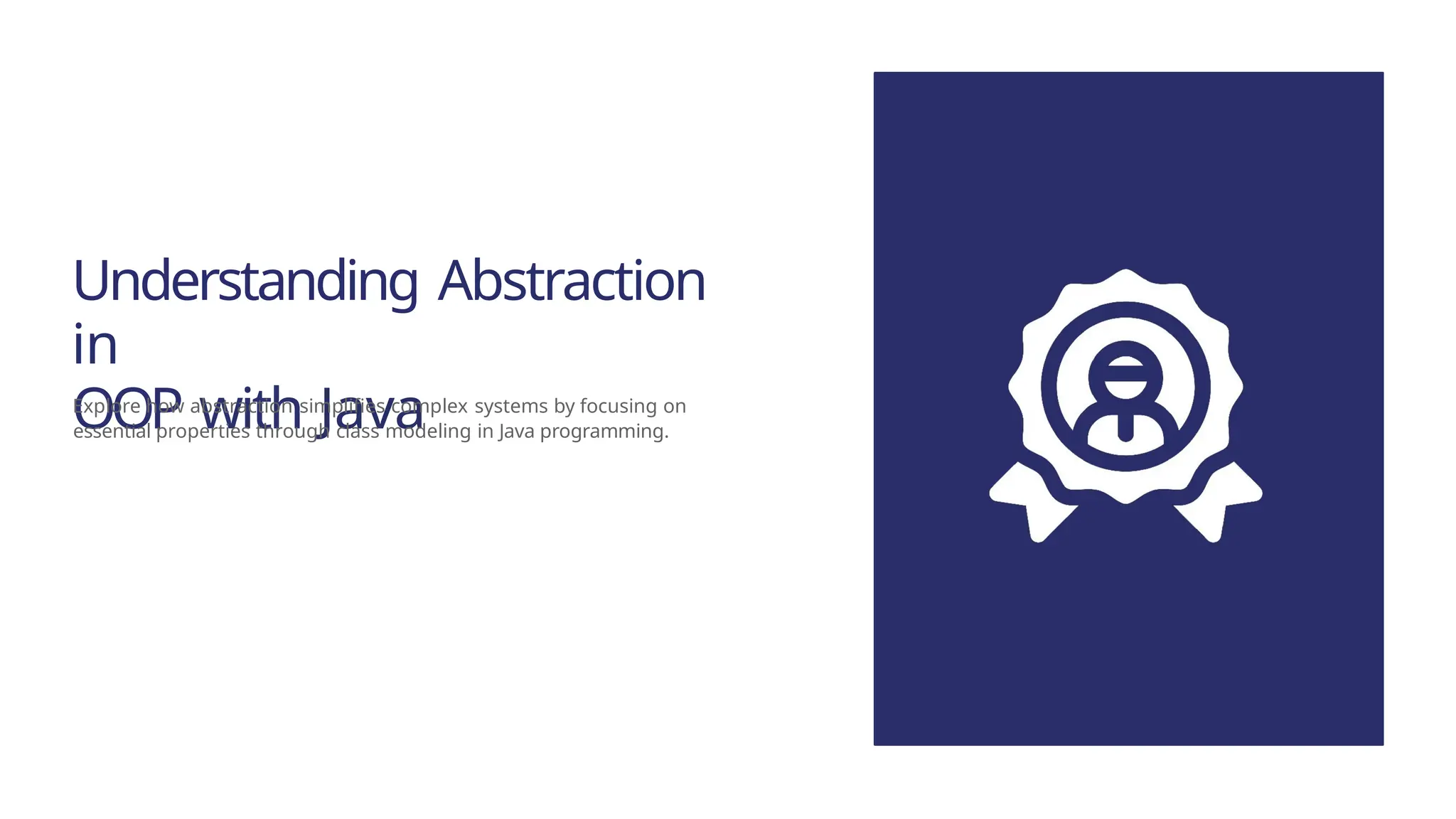This presentation provides a comprehensive overview of Object-Oriented Programming (OOP) in Java, covering core concepts like encapsulation, inheritance, polymorphism, and abstraction, along with Java-specific features such as platform independence, multithreading, memory management, and security.


